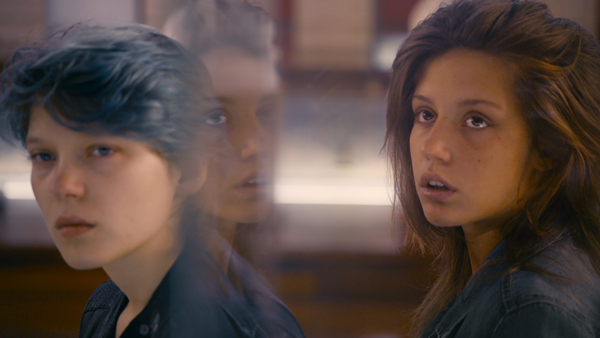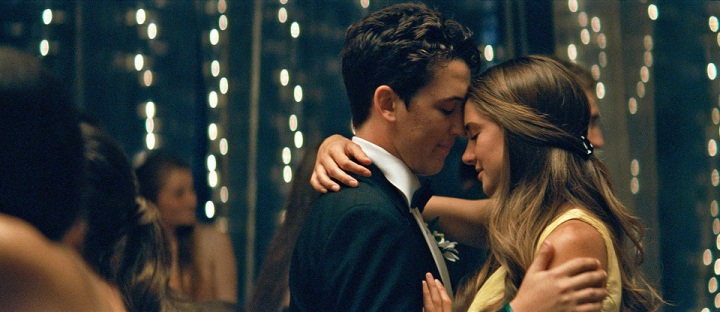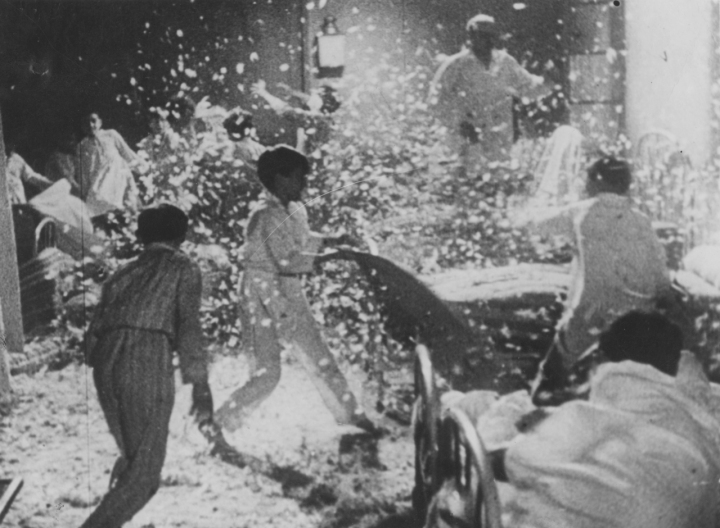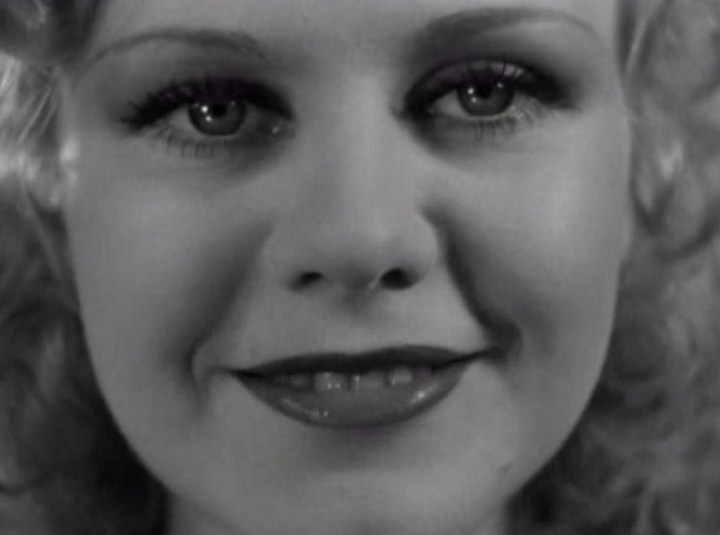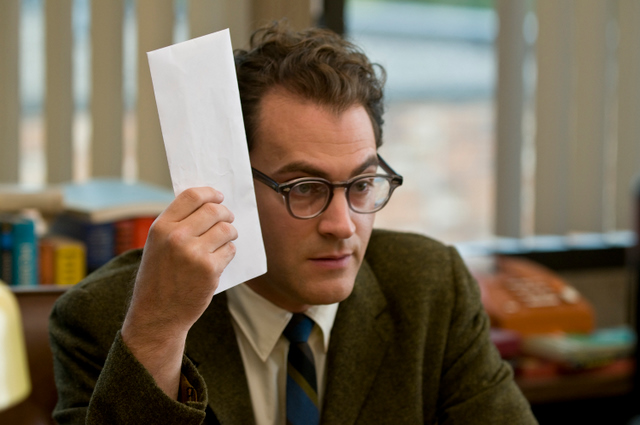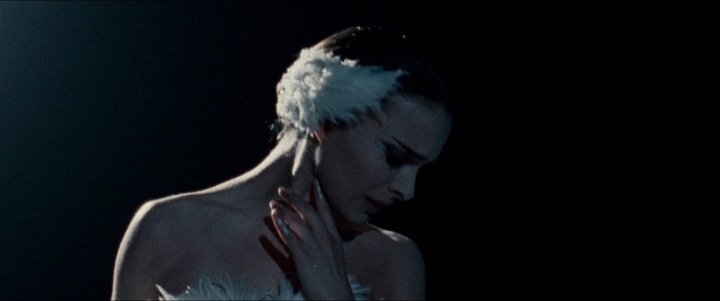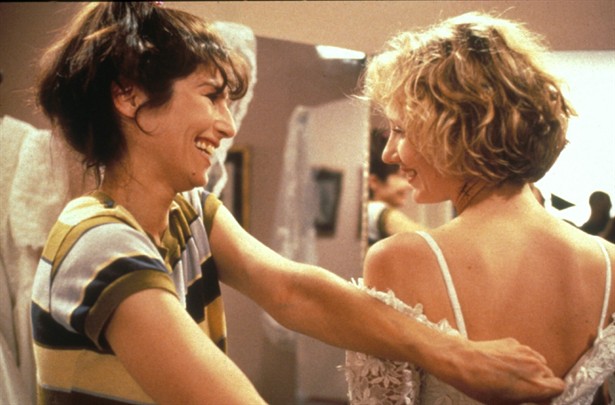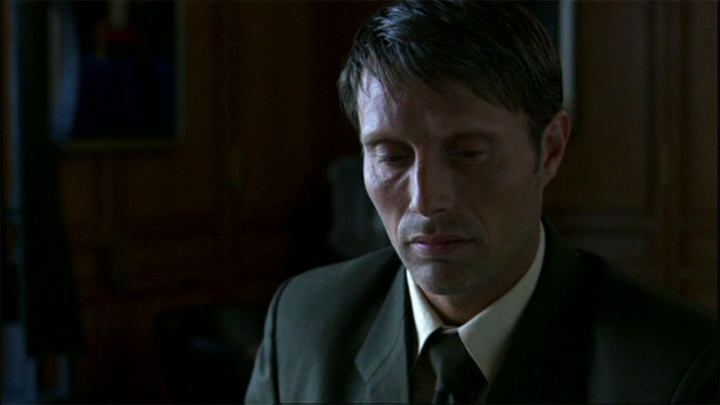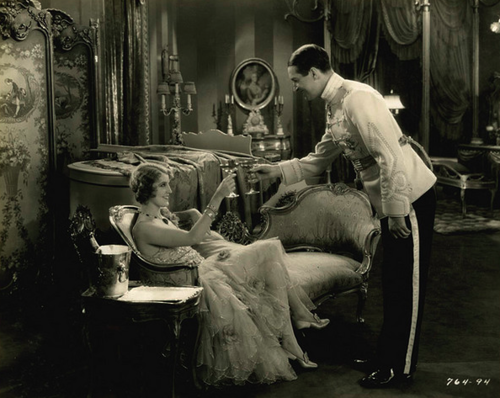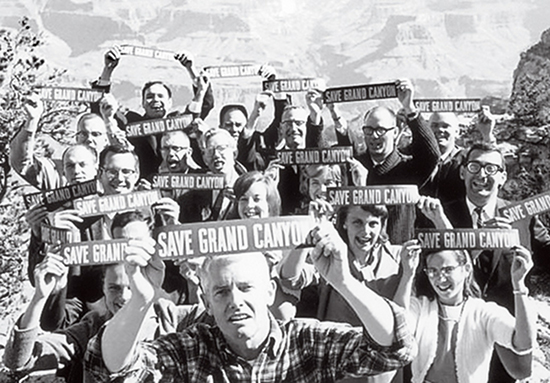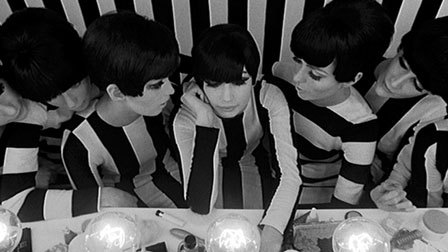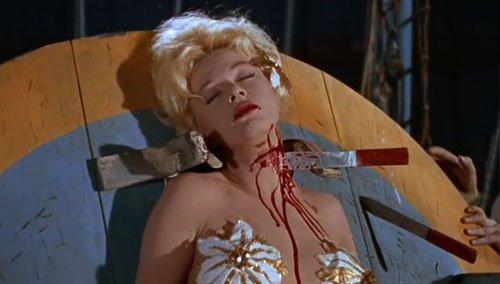I have to admit, 2013 hasn’t quite impressed me the way it’s impressed others. But you have to take that with a grain of salt. I think every year in film is special. I don’t think any one year in film is weak, and when people have stated it in year’s past I just want to pish-posh them away. If you’ve said this, you just haven’t seen enough! But 2013 did, quite simply, herald more disappointments than most years. But I still found plenty to love. I’ve got some major blind spots, the biggest of which I’ll list below. At a certain point, it’s just time to make the damn lists. I tried to see the majority of the films that held the most interest for me. Eventually I’ll catch up with the ones I missed. My top 15 goes up tomorrow.
My other 2013 film lists:
Top 25 Performances https://cinenthusiast.wordpress.com/2014/01/19/list-top-25-performances-from-2013/Top Fives of 2013 (in which I dole out a boatload of superlatives): https://cinenthusiast.wordpress.com/2014/01/20/list-top-fives-of-2013-in-which-i-dole-out-a-boatload-of-superlatives/
What I’ll Remember About the Films of 2013: A Personal Sampling: https://cinenthusiast.wordpress.com/2014/01/22/what-ill-remember-about-the-films-of-2013-a-personal-sampling/
Some Major Blind Spots: The Act of Killing, The Great Beauty, Nebraska, Captain Phillips, A Touch of Sin, We Are What We Are, The Square, In a World…, Post Tenebras Lux, All is Lost, Gimme the Loot, Wadjda, To the Wonder, After Tiller, Twenty Feet from Stardom

Honorable Mention:
Bastards (Denis) (France)
For my honorable mention I’ve chosen a film that has unexpectedly haunted me since viewing it. I like Claire Denis’ latest a lot, but felt it became trapped between her opaque poeticisms and having to fulfill noir tropes left lingering after the dust settles. That being said, I haven’t been able to shake the thing since seeing it, in such a way that the film bares an honorary mention just on that that, let alone its other considerable achievements.

#30. The Selfish Giant (Barnard) (UK)
Clio Barnard’s second film, an outgrowth of and companion piece to her first (the experimental documentary The Arbor), continues to explore life in Bradford where post-industrial environments harbors dire below-the-line living conditions. It also confirms her as a new voice in British cinema. The social consciousness is rooted in drudgery specific to the area where the hum of electricity, and fate, loom over the characters. We see how and why kids would take part in the illegal and lucrative scrap-dealing world as an immediate answer and sole misguided carrier of hope. This is a hankie movie everyone. Big. Time. Hankie Movie.
The catharsis and release that comes at the end, after a period of unerring focus and shock, is sort of soul-shattering. And it illustrates why the film works so well. It often seems hopeless, and there is little good depicted in this world, but The Selfish Giant is punctuated with moments where compassion is a form of exchange between two people. Barnard is also thankfully far more interested in the daily existence, of seeing Arbor and Swifty in their natural habitats than in point-to-point storytelling. I’m absolutely struck by the work of the two lead children, both non-actors who came from the area. Falls in line with British social realism films of yesteryear. Hopeless yet humanistic. Powerful but not plodding.
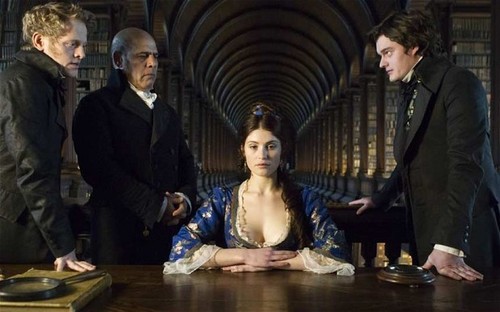
#29. Byzantium (2013, Jordan) (Ireland/UK/USA)
There were a number of films I became very fond of this year that almost made the cut. But time and time again I kept coming back to Neil Jordan’s succulent and underappreciated return to territory the likes of The Company of Wolves and Interview with the Vampire. Byzantium is a tell-tale yarn fraught with dicey dynamics and the eternal past. Saoirse Ronan stands at the center but it’s Gemma Arterton who most captivates. You feel the weight of time and the world on Clara’s shoulders even though she likes to pretend it isn’t there. Moira Buffini, who I’ve come to expect wonderful things from, concocts a vampiric story about women staking a claim for themselves in a male-dominated construct. The lush imagery is supported by the notion that female characters can take control of their own narratives. It has the feel of a successful adaptation, a film about where people land within their own story when their fantastical tale is all said and done.
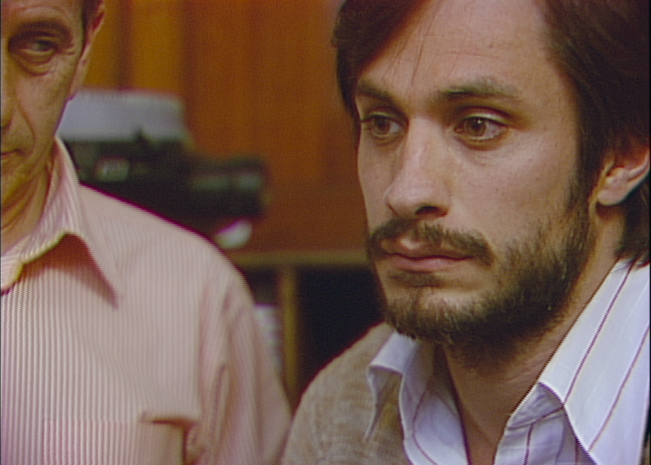
#28. No (Larrain) (Chile) Fuses form with the period visual language at hand. No’s greatest success is the way it embraces the outlandish humor inherent in selling democracy to the public using advertising language and branding without ever feeling like it side-sweeps what is at stake. It is heavily populated with riotous and invaluable archival footage. The story is told through the assumedly fictional central figure played by Gael García Bernal who strides through the film freely aware that philosophy and political discussion sadly don’t have the market appeal of say, a jingle. It’s very focus further supports this idea as does the low-def 80’s format. Bernal makes his enigma of a cocky wunderkind full stop captivating. It also brings back pleasant yet vague memories of learning about Chile in my Latin American history class.
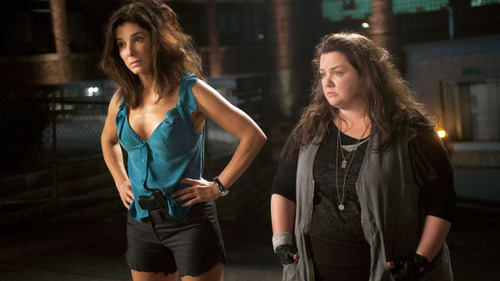
#27. The Heat (Feig) (USA)
Melissa McCarthy dusts off one-liners like she’s dealing cards as well as creating a well-rounded character within a comedic framework. McCarthy and Bullock create the best onscreen duo to hit the multiplexes since Hill/Tatum in 21 Jump Street. Not coincidentally, both are buddy-cop films. And unlike 21 Jump Street, which falters in its last third, The Heat manages to stay consistent, its weaknesses trickle in throughout (including a mean-spirited streak) without hindering it too much at any given time. I had such a blast with this, and Feig’s direction really comes through in how he extracts the most laughs out of chaotic situations. Two examples include the scene at the club and the drinking montage.
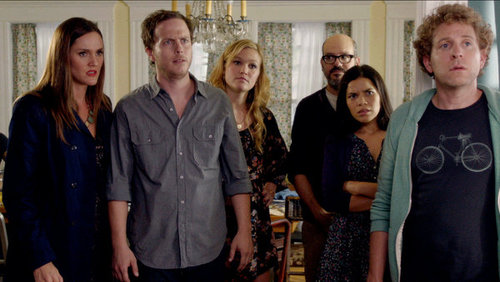
#26. It’s a Disaster (Berger) (USA)
Todd Berger’s low-key apocalyptic comedy nails the awkwardness of being thrust into new social entanglements and the weird and thoroughly under-explored dynamic embedded in the dreaded third date. The ensemble have great rapport, and the chamber piece is kept up in the ways characters take off in various amusing reactionary directions. If some of the characters never become interesting or move past their introductory vibe, it’s a relatively minor detractor in what is one of the most consistent and enjoyable comedies I’ve seen in some time. More people need to see this. The final scene is spot-on.
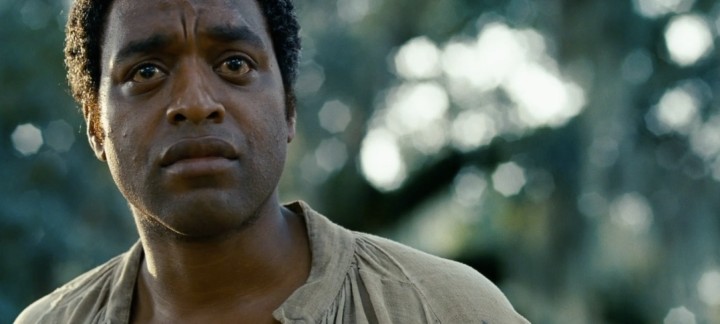
#25. 12 Years a Slave (McQueen) (USA)
Steve McQueen somewhat inverts his psychological studies from outside-in/how the body inherently relates as vessel between what we see of people and what goes on within. It’s all recognizably McQueen, with suffering as the nucleus. One man’s story, which remains prioritized, is used as a catalyst for taking in, if not directly on, the larger whole, all stemming from the centrality of Solomon. There is an indirect blanket focus on the broader sets of societal and ideological circumstances through character behavior required for atrocities to be normalized. It’s a story of perverse realities, realities that reinforce the importance of always continuing to confront history, to reexamine, to not forget.
McQueen presents the material, with a no safety setting intact. Long takes, shallow focus, the pain showing on the face and being inflicted on the body. I do wonder about the unerring focus on brutality, and if maybe it’s sort of an easily blunt method of addressing the institution of slavery that slides the aforementioned blanket focus I mentioned earlier into the shadows. It’s a complicated topic to be sure, but I have largely appreciated the folks willing to question the film’s merits as opposed to blindly accepting them, even if I feel there’s a lot more going on in the film than the more narrow ways detractors have read it.
And that ending. Solomon is lifted out of hell, and the film comes to a close with a quiet reunion. As Solomon looks on at his family, both familiar and unrecognizable, apologizing for the state of his appearance, the impact of the film hits you all at once. It’s like an unspeakable tidal wave.

#24. New World (Park) (South Korea)
Mob movies have to work a little extra to earn my commitment. I’m not adverse to them, and there’s actually quite a few I like or love. But it’s not a genre I automatically care about. New World, written and directed by I Saw the Devil scribe Park Hoon-Jung more than earns my commitment. It pulls you in from the word go. It’s more about the characters and how their long-standing relationships go hand-in-hand with the choices that are made than strictly adhering to mob tropes. There is an unforeseen ripple effect that the characters can’t quite define, but they all know it’s there. The parking garage fight scene is a kinetic stunner that I’m still wrapping my mind around. I seriously cannot stress that enough. All of the performances are incredibly strong, none more so than Hwang Jung-min, his doofy swagger acting as a posturing veneer. This is swift, smart, and impressive all-around. It felt like a kind of unspoken love story between two ‘brothers’; the curious coda falls in line with this reading.
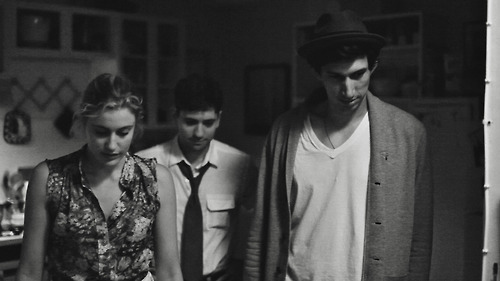
#23. Frances Ha (Baumbach) (USA)
Here’s the thing with Frances Ha. Saw it, loved it, continued to love it, and then a few weeks after seeing it, it left a slightly dissatisfied taste. I’m confident that a re-watch will rectify this strange faded feeling, but for now it gets a lower spot than it otherwise would have. But I’m still in the minority for preferring caustic Jennifer Jason Leigh-collaborative Baumbach over bubbly Greta Gerwig-collaborative Baumbach.
Noah Baumbach revisits the comical sharpness of his roots and the result is a youthful and delectable collaboration with new squeeze Gerwig. It is about the intricacies and intimacies of female friendship and the slow emergence of self-aware maturity. And it ties the two together beautifully. I love its flighty makeshift structure, completely coated in French New Wave sensibilities. It’s equal-parts comprised of full scenes and montage where exchanges and moments are pared down to their minimum for maximum essence. It paints a fairy tale-like picture where the underlying sadness can be overcome because let’s face it, the only thing holding Frances back from putting her best foot forward is herself. She makes some poor decisions along the way in order to live in the past and retain a sense of control but they are ill-advised. Has there been a more pitiful Paris excursion in film?
This would make an excellent double feature with Walking and Talking. Dean and Britta show up again here and this time they have lines! Major bonus points there. I know we all justifiably fawned over the usage of “Modern Love” (though knowing there’s another usage featuring Denis Lavant out there makes me salivating for the latter), but can we stop for a second and appreciate the more memorable multiple usage of Hot Chocolate’s “Every 1’s a Winner”?
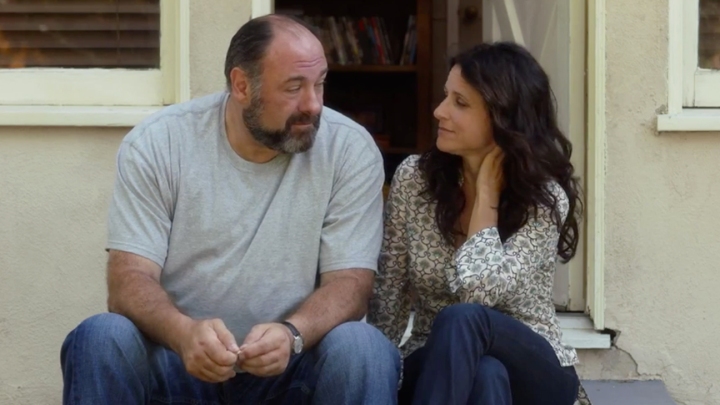
#22. Enough Said (Holofcener) (USA)
Nicole Holofcener tends to deal with wayward women in some sort of semi-self-inflicted crisis. Here, she skillfully observes a woman whose inability to trust her own judgment and have her own experiences gets her into some uncomfortably sticky situations. Enough Said works so well in part because the script openly acknowledges that these characters have a lot of life both behind and ahead of them. It deals very honestly with the fact that budding relationships which come in middle age carry baggage and a past that both must reconcile. Each have daughters, ex-spouses, their own experiences and acquired defense mechanisms. In Hollywood, middle-aged romance is a sort of hazy hiccup in life that must be overlooked or ignored completely, despite being far more interesting for its mature perspective. That attention to relationship history is both the possible savior and destroyer for Eva and Albert’s relationship.
It has its stumbles (rom-com polish, unsubtle reminders, and a corny score) but Holofcener gets at the loss parents experience when their children leave the nest, and the parallel terror of new relationships in middle age when the past lingers and the future is mined with vulnerable uncertainties.
Full Review: https://cinenthusiast.wordpress.com/2013/10/25/review-enough-said-2013-holofcener/
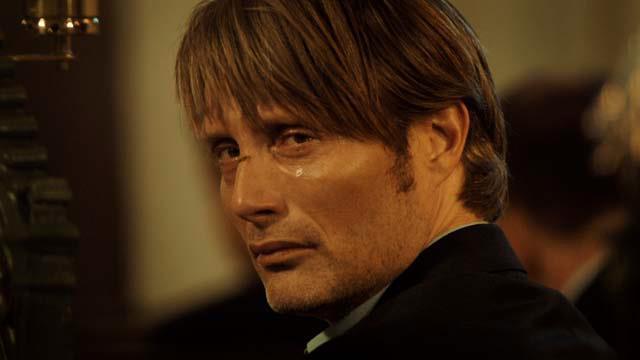
#21. The Hunt (Vinterberg) (Denmark)
That a film like this is an easy potshot of ‘look how useless people can be’ in a herd mentality scenario doesn’t lessen its impact as heralded by Thomas Vinterberg and powerhouse star Mads Mikkelsen. Links back to the director’s seminal Festen by looking at another accusation of sex abuse, this time a decidedly false one. Vinterberg never lets go of his grip on seeing the constant gears of the snowball effect setting up and going into motion. Standard narrative manipulation aside, everything about this feels like an eerily plausible train wreck you can’t stop from happening. Everybody is depicted as well-meaning individuals whose reactions are understandable (Fanny assailants aside) given the circumstances yet still avoidable. It’s one of the more successfully frustrating ‘audience-can’t-reach-out-and-set-things-straight’ experiences. Its study in mob mentality, importantly a mob mentality rooted in genuine search for justice borne out of rightly placed protection, offers no easy answers as it mourns the loss of innocent and pure interactions between adults and children. Those early scenes can’t even exist in their purity because we know what’s coming. Reliable great Mads Mikkelsen brings all of this home with his kind and giving character, respectable stiff upper-lip slowly giving way.

#20. Drug War (To) (China/Hong Kong)
2013 seems to be the year where the film community has collectively taken on To’s intimidating filmography with rigor. It’s an exciting development largely triggered by Drug War’s Western success. Not including Drug War, I’d only seen a couple of To’s films (everyone needs to see The Heroic Trio because it has amazing Hong Kong lady stars becoming superheroes and kicking ass!) and Drug War definitely left me pining for more of his work.
This is rigid, disciplined, alive. Entirely driven, on a content level, by its economic plot mechanics, making up a serious and twisty crime/action film laced with politics of Mainland China where rigidity is a false pretense because everything feels like it can go bust at any second. And oh boy does it ever. On its surface it may on first glance look like a really solid action flick, but when you watch it, it doesn’t quite feel like others of its kind. It’s hermetically sealed and about the illusion of order. Everything is slick (what glorious sound!); not supported by the notion of ‘cool’ so much as the notion of pure craftsmanship. There is an immaculate tracking of space and place. You can tell this is special just in the way it goes about introducing all the key players at the beginning. It doesn’t dumb down character intros but it’s a casually intricate map rooted in clarity. Drug War gets more compelling by the minute and is contains a pretty fantastic female detective played by Huang Yi.
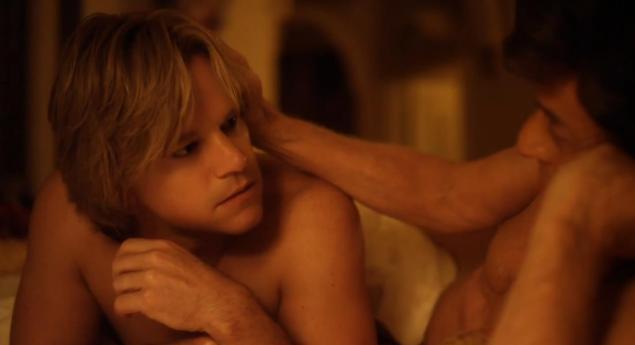
#19. Behind the Candelabra (Soderbergh) (USA) (aired on HBO)
My favorite Soderbergh film since Traffic, Behind the Candelabra is biographical, campy, comedic, showbizzy, heartwrenching, bizarre and poignant all at once. You could watch it once and latch onto any one of its parallel modes of design. Watch it another time and give yourself over to a different thread. It takes the conventional rise-and-fall relationship trajectory and uses it to explore how toxicity and devotion intermingle. Douglas lets us see a little slime underneath the bedazzle, just enough to really grey things up. This is in the running for Matt Damon’s best work. His Scott is also genuine on one level, but subtly duplicitous in the perks of living the life and the downward spiral he allows himself to go on.
The glitz, cosmetic surgery, PR work and pills make up this fragile veneer where everyone is going big or going home in a constant effort to keep up a transparent lie in more ways than one. Oh, and kudos for Cheyenne Jackson who kills every second of his tiny role. On a final but crucial note, the Matt Damon eye candy is at ridiculously high levels.
#18. Blue is the Warmest Color (Kechiche) (France)
A seminal relationship, the search for identity, heartbreak and hope all in extreme close-up, all mapped out on faces. Largely free of narrative commitment, Blue is more tethered to an almost verite-like observation which captures intense personal experience. There is a ruthless commitment to the vigorous lifeblood of a young woman which is embedded in everything from the extratextual unpleasant filming experiences to the naturalistic self-discovery and epic fumbles that belong to Adele. She has a lust for life in eating, dancing, masturbating; the basics of living are depicted through that stumble towards an uncertain identity and sense of self. Problematic claims aside, there’s an audacity and animalism to the much-talked about sex scenes (our culture’s general prudishness is as much to blame for this as is textual and extratextual context) that is so pulsing, vital, sweaty and real to the relationship that the idea of them, nature of the male gaze and actors experience aside, is important. It’s the kind of stark eroticism and explicitly frank depiction of sex I think we need more of. We stay with them to the point where, for better or worse, it feels like we enter another realm and it fits with the film he is making, exploitative or not (to which I say both yes and no).
I was especially taken with how meaninglessly Adele fucks up. It’s so spot-on to actual experience. We never see her trying to communicate to Emma how she feels, and her all-too human fuck-up is driven by inexperience with relationships and how to handle their downs, and a general restlessness. Unbearably palpable is the diner scene towards the end, a wrenching depiction of can’t-go-back heartbreak, regret and pain on both sides. The journey we go on just in that scene is mind-boggling. Blue is also responsible for turning my adoration of Lea Seydoux into full-blown crush territory.
More thoughts here: https://cinenthusiast.wordpress.com/2013/12/16/films-seen-in-2013-round-up-235-239/

#17. Monsters University (Scanlon) (USA)
I have no idea what this film did to catch the amount of undeserved slack it received within the film community upon its release. Aren’t most movies been-there-done-that? Doesn’t execution count for anything? Has Pixar pitted itself into a hole of unreachable expectation? A riff on the college buddy comedy, Monsters University might not pack the kind of next-level emotional wallop of some of Pixar’s output or have the kind of ambition we crave from them, but this was flat-out one of the most entertaining films I saw this year. That anyone could have walked out of this unsatisfied boggles my mind. It’s heartfelt, hilarious and carries a wonderful message on its back that I wish had provoked more discussion.
I find it fairly unconventional for an all-ages film to be this realistic in its message. This isn’t “Reach for the Sky”. This is “Reach for the Sky” but realize it’s okay that you might have to start at the bottom. There’s something bold in stating (in a kids film no less!) that desire and natural talent don’t always have matching levels. Mike wants to scare more than anything in the world. But he’s just average. And that’s okay. It hits every note it intends to, every joke lands on-target (anyone who lived on a college campus will appreciate a lot of the humor) and Crystal and Goodman lend top-notch voice work in reviving Mike and Sully.
#16. The Spectacular Now (Ponsoldt) (USA)
Indie darling coming-of-age romance based on a YA novel? Doesn’t sound like my cuppa. Oh, but in this case it was. We are brought into the characters lives on their own level of experience; first loves, mistakes, conflicting flutters, people letting them down. In the process, we come to care so deeply for Sutter and Aimee, separately and, for better or worse, together. Ponsoldt makes us feel like part of the story; we feel as they feel. The uncertainty, the butterflies, the ways people change and don’t change and the self-doubt.
I’m über-picky with romance. But I was struck by the maturity with which this story and these characters, even the secondary ones, are crafted. People are neither wholly good or bad, everyone is flawed and capable of weakness, ill-advised coping and the hardships of living with oneself. It’s an obvious truth, and one that films tend to forget in service of tropes. I guess what I’m saying is that The Spectacular Now doesn’t view its characters as characters, it views them as people. And I responded very positively to that. Miles Teller and Shailene Woodley are revelatory.
More thoughts: https://cinenthusiast.wordpress.com/2014/01/06/capsule-reviews-films-seen-in-2014-round-up-1-5/
